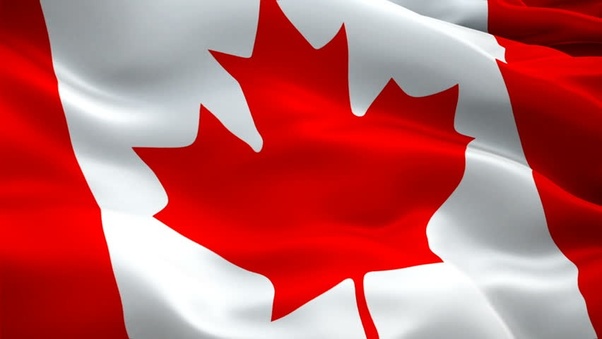
 8 April, 2025
8 April, 2025 
Pharmacists, social workers, and dental hygienists now have a greater opportunity to secure Canadian permanent residence (PR) through Express Entry, thanks to the inclusion of these professions in the category-based draws.
On February 27, 2025, Immigration, Refugees and Citizenship Canada (IRCC) implemented significant changes to the Express Entry categories. This included the creation of a new "Education" category and the removal of the "Transport" category. Furthermore, numerous updates were made to the occupations listed under the existing categories. Notably, the healthcare category was expanded to encompass social service occupations. This article will explore the following:
What Occupations Fall Under the Healthcare and Social Service Category?
Canada utilizes the National Occupation Classification (NOC) system to categorize jobs based on their roles and responsibilities. The table below details all the occupations included in the augmented healthcare and social services category, with the occupations added in 2025 highlighted in bold.
| Job Title | NOC Code |
| Animal health technologists and veterinary technicians | 32104 |
| Audiologists and speech language pathologists | 31112 |
| Cardiology technologists and electrophysiological diagnostic technologists | 32123 |
| Chiropractors | 31201 |
| Dental hygienists and dental therapists | 32111 |
| Dentists | 31110 |
| Dieticians and nutritionists | 31121 |
| General practitioners and family physicians | 31102 |
| Licensed practical nurses | 32101 |
| Massage therapists | 32201 |
| Medical laboratory assistants and related technical occupations | 33101 |
| Medical laboratory technologists | 32120 |
| Medical radiation technologists | 32121 |
| Medical sonographers | 32122 |
| Nurse aides, orderlies and patient service associates | 33102 |
| Nurse practitioners | 31302 |
| Nursing co-ordinators and supervisors | 31300 |
| Occupational therapists | 31203 |
| Optometrists | 31111 |
| Other medical technologists and technicians | 32129 |
| Other professional occupations in health diagnosing and treating | 31209 |
| Other technical occupations in therapy and assessment | 32109 |
| Paramedical occupations | 32102 |
| Pharmacists | 31120 |
| Pharmacy technical assistants and pharmacy assistants | 33103 |
| Pharmacy technicians | 32124 |
| Physician assistants, midwives and allied health professionals | 31303 |
| Physiotherapists | 31202 |
| Psychologists | 31200 |
| Registered nurses and registered psychiatric nurses | 31301 |
| Respiratory therapists, clinical perfusionists and cardiopulmonary technologists | 32103 |
| Social and community service workers | 42201 |
| Social workers | 41300 |
| Specialists in clinical and laboratory medicine | 31100 |
| Specialists in surgery | 31101 |
| Therapists in counselling and related specialized therapies | 41301 |
| Veterinarians | 31103 |
How to Determine Your Work Experience Eligibility
To be eligible under the healthcare and social services category, you must have accumulated at least six months of continuous full-time work experience (or an equivalent amount of part-time experience) in a single qualifying occupation within the past three years.
Follow these steps to ascertain if your work experience aligns with the eligible NOCs:
Step 1: Identify Your NOC Code
Visit the Government of Canada’s NOC page and use the "Filter items" search bar to find the NOC code and occupation title that best match your work experience. Try various keywords and alternative job titles if your initial search is unsuccessful. Note the corresponding TEER category and NOC code.
Step 2: Verify Main Duties
Go to the Employment and Social Development Canada (ESDC) webpage and click on the "Search by NOC Code" tab. Enter the NOC code you identified and review the "main duties" section. Ensure your work experience aligns with the lead statement and that you have performed a substantial number of the main duties, including all essential duties outlined in the NOC description.
Step 3: Confirm Category Eligibility
Visit the Express Entry category-based selection page. Under "find out who’s eligible for each category", select "healthcare and social service occupations". Check if your occupation and its NOC code are listed. If they are, your occupation is likely eligible for this category.
Newly Eligible Occupations and Example Job Titles
The following table lists the newly eligible occupations within the healthcare and social service category, along with some example (alternate) job titles:
| NOC Occupation title | Example job titles |
| Animal health technologists and veterinary technicians | Laboratory animal technician |
| Cardiology technologists and electrophysiological diagnostic technologists | Cardiac stress technologist |
| Dental hygienists and dental therapists | Dental nurse |
| Other medical technologists and technicians | Dietary technician |
| Pharmacists | Pharmacy technician supervisor |
| Social and community service workers | Aboriginal outreach worker |
| Social worker | Coordinator of social work |
Qualifying for a category-based draw significantly increases your likelihood of receiving an Invitation to Apply (ITA) for PR through Express Entry. This is because category-based draws often have a considerably lower Comprehensive Ranking System (CRS) score requirement compared to general or Canadian Experience Class (CEC) draws.
In category-based draws, IRCC exclusively invites candidates who meet the specific criteria of the category. This makes these draws much less competitive than broader invitation rounds.
For instance, in 2024, the CRS cut-off for general draws ranged from 524 to 549. However, during the same period, the CRS cut-off for healthcare occupations ranged between 422 and 463. This demonstrates that candidates whose CRS scores might not be high enough for general or program-specific draws could still have a better chance of receiving an ITA if their occupation is identified as in demand by Canada.
Canada's Express Entry system does not allow foreign nationals to apply for PR directly. Instead, they must first receive an Invitation to Apply (ITA) after meeting the eligibility criteria for one of the three federal immigration programs managed under Express Entry:
Meeting the minimum eligibility requirements for at least one of these programs is necessary to create an Express Entry profile.
Candidates are then ranked using the Comprehensive Ranking System (CRS), which awards points based on factors such as age, education, work experience, and language1 proficiency.
Express Entry draws are conducted regularly, and candidates with the highest CRS scores who meet the eligibility criteria are invited to apply for PR. Upon receiving an ITA, candidates have 60 days to submit a complete PR application.
These draws can be:
Category-based draws specifically target individuals with particular work experience or language skills that align with Canada's economic priorities.
This year, IRCC has announced six Express Entry categories:
To know more and apply for immigration to Canada in 2025, you may get in touch with our seasoned and registered Canada migration expert on Toll-Free No. 78-18-000-777 or you can drop us an e-mail at info@visasavenue.com.





